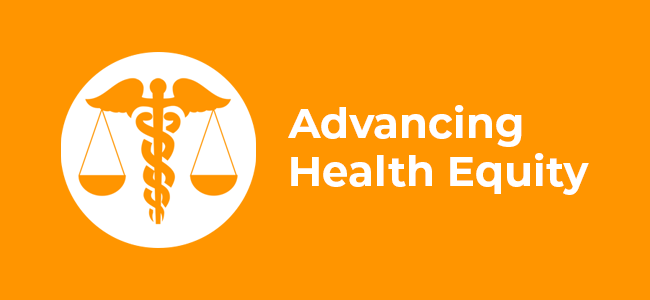Health equity is having the personal agency and fair access to the resources and opportunities needed to achieve the best possible physical, mental and social well-being. By 2030, it is expected that 20% of Americans will be ages 65 or older, and soon after will outnumber children. Our healthcare system is unprepared for the complexity of supporting an aging population—a problem that has been magnified by the COVID-19 pandemic, which has had the greatest impact on historically marginalized older adults.
- Lack of data on historically marginalized populations prevents adequate strategies. For older adults, social determinants of health such as access to housing, financial resources, transportation and social connections, play a critical role not only in better health outcomes, but also in improving overall well-being. Proper collection of reliable data can help shine a light on where disparities exist to develop adequate interventions and strategies for tackling health inequities.
- Lack of an age-competent and diverse healthcare workforce is exacerbated by a shrinking pipeline of talent. Too many health providers do not understand the diversity inherent in aging processes, and when treating older patients, discount their needs and experiences. Though people of color are projected to make up much of the population within a few decades, they are largely underrepresented in the healthcare workforce. Only 11% of the physician workforce, 15% of registered nurses and 20% of physical and occupational therapists identify as African American, Hispanic, or American Indian and Alaska Native.
- Lack of resources for community-based organizations prevents delivery of inclusive and reliable community-based care. Communities served by the health system are usually the last stakeholders to provide input and direction to localized health equity plans. For successful programs, implementation and community buy-in, community members and community-based organizations must have the resources and independence in program investments.
Invest in broad, diverse data collection
- Federal agencies, such as the CDC, should roll out high-quality, centralized and standardized data collection training and systems to improve accuracy, close gaps in data, and monitor and report on progress made toward eliminating disparities.
- Support investments in implementation of solutions based on Social Determinants of Health (SDOH) data.
- Improve diversity in clinical trials and data collection for COVID–19 and future public health threats to address SDOH.
- Equip providers with the necessary technical assistance and funding to execute a unified data collection and tracking process.
- Require health systems to collect, analyze, and report enhanced disaggregation of race and ethnicity data to allow for transparent reporting and analysis of data.
Expand, diversify, and train the care workforce
- Increase funding and developmental opportunities that promote racial, ethnic and all forms of diversity in the healthcare workforce.
- Expand and target graduate medical education funding and loan forgiveness programs to foster training for individuals from underrepresented groups.
- Support caregivers and home- and community-based care models that prioritize SDOH.
- Improve gerontological training for all healthcare providers, from the specialized diagnosis and treatment of older patients to more individualized, integrated care that incorporates the patient’s person-centric goals and treatment objectives.
Broaden the scope of federal programs for older adults to empower and build resources in community-based organizations
- Support increased federal funding for existing and new social, economic and mental health services for older adults beyond current programs.
- Invest in age-inclusive federal, state, and local health literacy efforts to improve gaps in healthcare understanding and to lower costs.
- Invest in creative solutions for streamlining benefits, transportation reimbursements, grants and vouchers to ensure older adults have access to community-based healthcare options.
- Staff federal advisory boards and councils with local leaders of organizations serving older adults, and older people who receive services.
- Improve federal grant-making and funding to increase lead-time for applicants, funding for capacity-building programs, improve reporting systems, provide technical assistance, and require local steering committees made up of community-based organization stakeholders.


